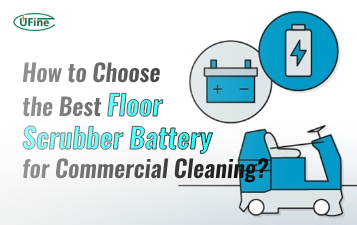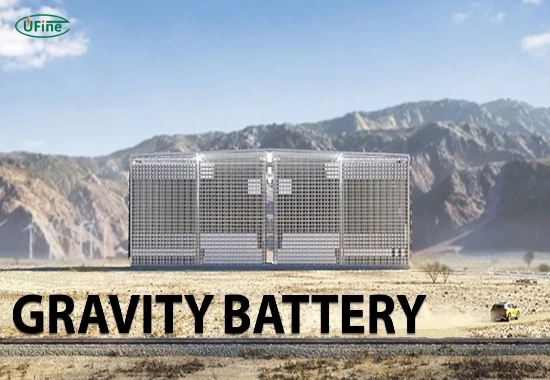A gravity battery is an innovative energy storage solution that harnesses gravitational potential energy to store and release electricity. As the world shifts towards sustainable energy sources, understanding how gravity batteries work and their possible applications is essential for anyone interested in renewable energy technologies. This article explores gravity batteries’ mechanics, benefits, components, and real-world applications, providing a comprehensive overview of this exciting technology.
Part 1. What is a gravity battery?
A gravity battery operates on a straightforward principle: it stores energy by lifting a mass to a certain height and releasing it by allowing it to descend. This process converts gravitational potential energy into electrical energy, making it a unique alternative to traditional battery systems.
How Does It Work?
The operation of a gravity battery can be broken down into two main phases:
- Energy Storage: During periods of low electricity demand or excess energy production (such as from renewable sources like wind or solar), an electric motor lifts a heavy mass (often using a winch system) to a predetermined height. This process requires energy, which is stored as gravitational potential energy.
- Energy Release: When electricity is demanded, the mass is allowed to descend. As it falls, it drives a generator that converts the kinetic energy back into electrical energy, which can then be fed into the grid or used directly.
Part 2. What are the main components of a gravity battery?
Understanding the components involved in a gravity battery helps clarify how they function effectively:
- Mass: The weight used in the system can vary widely, from concrete blocks to specialized materials designed for maximum efficiency.
- Lift Mechanism: This typically involves an electric motor and pulley system that raises the mass.
- Generator: When the mass descends, it turns a generator that produces electricity.
- Control System: This manages the lifting and lowering processes, ensuring optimal performance and safety.
Part 3. Advantages of gravity batteries
Gravity batteries offer several advantages over traditional battery technologies:
- Longevity: Unlike chemical batteries, which degrade over time, gravity batteries can last for decades with minimal maintenance.
- Environmental Impact: They use non-toxic materials and have a lower carbon footprint than lithium-ion batteries.
- Scalability: Gravity batteries can be easily scaled up or down depending on energy needs by adjusting the size and weight of the mass.
- Efficiency: While efficiency rates vary, many systems achieve around 70-90% efficiency in converting stored gravitational energy back into electricity.
Part 4. Applications of gravity batteries
Gravity batteries have promising applications in various sectors:
- Renewable Energy Storage: They can store excess energy generated from renewable sources, providing stability to the grid.
- Peak Shaving: Gravity batteries can help reduce strain on electrical grids by discharging stored energy during peak demand times.
- Off-grid Solutions: They offer reliable power storage for remote locations where traditional battery systems may not be feasible.
Part 5. Comparison with Other Energy Storage Technologies
When evaluating gravity batteries, comparing them with other popular energy storage solutions such as lithium-ion batteries and pumped hydro storage is essential. Each technology has its unique characteristics that make it suitable for different applications:
Lithium-Ion Batteries
Lithium-ion batteries are widely used for portable electronics and electric vehicles due to their high energy density and efficiency. However, they have a limited lifespan (typically 5-15 years) and environmental concerns related to mining lithium and disposing of old batteries.
Pumped Hydro Storage
Pumped hydro storage is one of the oldest forms of large-scale energy storage. It involves pumping water uphill during low-demand periods and releasing it through turbines during high-demand periods. At the same time, pumped hydro is highly efficient (70-90%) and requires specific geographical conditions (e.g., mountains) and significant initial investment.
Key Differences
- Lifespan: Gravity batteries can last up to 50 years, while lithium-ion batteries typically last only 5 to 15 years.
- Environmental Impact: Gravity batteries have a lower ecological footprint as they use non-toxic materials than lithium-ion batteries, which involve mining and disposal issues.
- Energy Density: Lithium-ion batteries have higher energy density (150-250 Wh/kg) than gravity batteries, which generally have lower energy density due to their mechanical nature.
- Cost: The estimated cost for gravity battery systems like Gravitricity is around $171 per MWh, significantly lower than lithium-ion’s $367 per MWh.
- Geographical Limitations: Pumped hydro requires specific geographical features (e.g., mountains), while gravity batteries can be implemented in various locations with appropriate infrastructure.
| Feature | Gravity Battery | Lithium-Ion Battery | Pumped Hydro Storage |
|---|---|---|---|
| Lifespan | Up to 50 years | 5-15 years | Over 50 years |
| Environmental Impact | Low | Moderate | Low |
| Energy Density | Lower (varies) | 150-250 Wh/kg | High (30 MWh+) |
| Cost per MWh | $171 | $367 | $165 |
| Round-Trip Efficiency | 70-90% | 85-95% | 70-90% |
Part 6. Challenges facing gravity batteries
Despite their advantages, gravity batteries are not without challenges:
- Initial Costs: The setup costs for gravity batteries can be high due to infrastructure requirements.
- Site Limitations: They require specific geographical conditions—such as height differences—to operate effectively.
- Energy Density: Unlike chemical batteries, gravity batteries generally have lower energy density, which may limit their applications in specific scenarios.
Part 7. Gravity batteries future prospects
The future of gravity batteries looks promising as researchers continue to innovate:
- Material Advancements: Developing lighter yet more robust mass materials could enhance efficiency and reduce costs.
- Hybrid Systems: Combining gravity batteries with other storage technologies could optimize performance and reliability.
- Increased Adoption: As awareness grows regarding sustainable practices, more industries may consider integrating gravity batteries into their operations.
Part 8. Real-world examples of gravity battery implementations
Several companies and projects are pioneering the use of gravity batteries globally:
Energy Vault
Energy Vault has developed large-scale systems that store energy efficiently using concrete blocks as weights. Their technology aims to provide reliable renewable energy storage solutions at a competitive cost.
Gravitricity
Based in Scotland, Gravitricity focuses on creating modular systems that harness gravitational potential using heavy weights suspended in shafts. Their approach allows for flexible installations tailored to various locations and needs.
Other Notable Projects
Other noteworthy projects include companies like Gravity Power and various universities researching optimizing gravity battery technology for future applications.
Part 9. FAQs
-
What are the main benefits of using gravity batteries?
Gravity batteries offer longevity, low environmental impact, scalability, and high efficiency compared to traditional battery systems. -
How do gravity batteries compare to lithium-ion batteries?
While both have advantages, gravity batteries excel in lifespan and environmental impact but typically have lower energy density than lithium-ion options. -
Can gravity batteries be used for residential applications?
They can be adapted for residential use, particularly in off-grid setups or homes utilizing renewable energy sources. -
What types of materials are used for the mass of gravity batteries?
Common materials include concrete blocks or specially designed weights that maximize gravitational potential while minimizing costs. -
Are there any limitations to using gravity batteries?
Initial setup costs and site-specific requirements are significant challenges for broader adoption.
Related Tags:
More Articles

How to Choose the Best Floor Scrubber Battery for Commercial Cleaning?
Selecting the ideal floor scrubber battery ensures a long runtime, rapid charging, and minimal maintenance for efficient commercial cleaning operations.
Battery for Blower vs Battery for Leaf Vacuum: Which One Should You Choose?
Battery for blower vs leaf vacuum—learn the key differences in power, fit, and runtime to choose the right battery for your outdoor tool needs.
How to Choose the Right Battery for Blower?
Choosing the right blower battery? Consider voltage, capacity, chemistry & usage. This guide helps match the best battery for peak performance.
How to Choose the Best Insulated Battery Box for Lithium Batteries?
Choosing the Best Insulated Battery Box for Lithium Batteries? Discover key factors such as size, material, and safety for optimal protection and performance.
7 Critical Elements on a Lithium Battery Shipping Label
What must be on a lithium battery shipping label? Learn 7 key elements to ensure safety, legal compliance, and correct handling across all transport modes.






